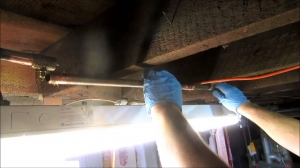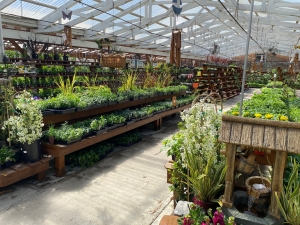When gearing up for renovation or construction work, the tools you choose can help or frustrate you. A reliable mixer, for instance, can turn a demanding task into a smooth, almost effortless process. Among the many options available, a handheld electric cement mixer has become a practical favourite for many people, offering just the right mix of mobility and power for smaller-scale jobs.
However, before you settle on a model, it is good to know what separates a dependable tool from one that might struggle to keep up.
Motor Power and What It Means for Performance
The motor is the heart of any mixer, and its strength largely determines how well it handles different materials. Power ratings, measured in watts, tell you how much muscle the machine brings to the table. If you are mostly blending lighter compounds like plaster or adhesive, a lower-powered unit will do fine. But for heavier materials like mortar or concrete, a stronger motor offers smoother operation and a more consistent mix.
Speed is another factor worth noting. Mixers with higher revolutions per minute (RPM) get the job done faster, but speed is not everything. The twisting force of the motor, also known as torque, determines performance. High torque allows the mixer to keep turning even when the mix gets thick, preventing potential injuries, stalls and uneven blending.
Balancing Weight, Control, and User Comfort
Since you will be holding the mixer for long stretches, the way it feels in your hands is crucial. A unit that is too heavy will tire you out quickly, while one that's too light might bounce around or feel unstable when you are working with denser materials.
That said, the weight should be evenly distributed so you are not constantly fighting against the tool. Ergonomic handles, variable trigger controls, and well-placed locks can make the job far more comfortable. When the controls are intuitive, you can focus on getting the mix right instead of wrestling with the tool.
Durability and Build Quality for Long-Term Value
Durability should be non-negotiable. A mixer with a sturdy metal gearbox, for instance, will usually handle heat and wear better than one built with plastic components. The housing, handles, and paddle fittings should all feel solid, without flexing or rattling.
It is also wise to choose equipment that has been field-tested and proven reliable across different environments. That kind of track record speaks volumes about how well it will hold up under real conditions. A good build not only extends the lifespan of your tool but also maintains mixing consistency over time.
Exploring Attachments and Variable Speed Options
While most handheld mixers come with a standard paddle, having the flexibility to use other attachments can be a real advantage. Different paddles suit different materials because some are designed for thicker mixes, others for smoother compounds. If you work with both cement-based and gypsum-based products, make sure your chosen model supports interchangeable attachments.
Variable speed control is another essential feature. Starting at a lower speed helps prevent splatter and gives you more control as the mix begins to form. Once the material thickens, you can ramp up the speed for a smoother finish.
Practical Buying Considerations and Support
Beyond the product specs, there is the matter of aftercare. A good warranty offers reassurance, but it's only as useful as the support that comes with it. Before buying, check whether spare parts like paddles, brushes, and cords are easy to source. Quick access to replacements can keep your downtime to a minimum if something wears out.
Dealers who provide responsive after-sales service can make ownership much smoother. It is worth investing in a brand that stands by its tools, rather than one that leaves you stranded when issues arise.
Takeaways
Finding the right handheld mixer is about aligning its strengths with your needs. Consider how often you will be using it, what materials you'll be working with, and the kind of workload you expect. The right balance of motor power, weight, and build quality will ensure that your investment serves you well for years to come.






